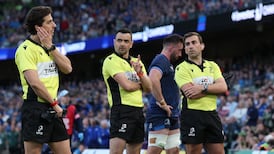Although it is too early to come to any definite conclusions about whatever overall developments there may be in the young-adult literature of 2015 there may be some interesting pointers in the first of the books which have already reached us. As a sweeping generalisation, it seems that fantasy is on the way out while realism seems to be on the way back.
Adolescence as experienced by today’s young people comes to be a significant theme for writers, most of whom, thankfully, are not concerned with didactically instructing their targeted readers how to lead their lives or to deal with problems. Rather, their focus, through the medium of a compelling narrative, is on reflecting, sometimes sympathetically, sometimes wryly, a world familiar to their readers. They, in turn, are encouraged to reflect on their place in it as they pass through the transitional adolescent years.
Traumas and tantrums, often arising from clashes with various authority figures, remain a feature of the “growing up” process, but in the more accomplished novels they are seen as providing the opportunity for enhancing inter-generational understanding rather than merely creating an excuse for prolonged outbursts of shouting.
The two young-adult novels discussed here have been selected for review primarily because of what is perceived as their literary excellence. It is, however, an intriguing coincidence that both of them should, as part of their subject matter, involve some of their adolescent characters in same-sex relationships. Over the past 50 years or so, gay themes have figured, sporadically, in teenage and young-adult fiction, but in more recent times they have moved from margin to mainstream, mirroring (or attempting to mirror) society’s evolving responses to homosexuality.
Battles against bigotry and homophobia are still being fought, often the consequence of what the young characters concerned refer to – and they are sometimes unhappy with the phrase – as their “coming out”. But the depressive and gloomy note of so much early young “gay fiction”, usually in response to intolerance and rejection, is being gradually replaced by something much more accepting and affirmative.
The fact that the concluding chapter of Martha Brockenbrough’s The Game of Love and Death (Scholastic, £7.99) is set specifically on Saturday, March 8th, 2015, gives the novel a definite contemporary feel, even if the rest of it puts it equally specifically – in 1937. Set in a Seattle divided by privilege and poverty, the narrative offers an enthralling insight into the complexities of adolescent love, heterosexual and otherwise, and into how, as the title implies, these strong youthful emotions can co-exist within an extended, threatening framework.
One view of the novel might see it merely as yet another variation on the “love and loss” theme, but this simplistically reductionist interpretation would be to diminish its much wider reference. It would also be to downplay the cruelly playful connotations of the title. Some “game” this, as we follow “Love” and “Death” being philosophically dissected as they exercise their manipulative tendencies.
Flora, a young African American, aspires to being another Amelia Earhart; while waiting for her dream to be realised she sings in a jazz club. Into her life comes Henry, a white boy, an accomplished classical musician, son of the local newspaper owner. Racial tensions ensue at both societal and familial level, exacerbated by suggestions of the city’s corporate and political corruption. All of this might well be enough to provide material for an engrossing story of the United States’ Great Depression years, but that would be to disregard Ethan, a teenager adopted by Henry’s wealthy family.
There is a wonderful moment when Henry, on his way to Flora’s club, notes that Ethan’s car is not in its usual parking space. “Where could he have gone?” he asks himself. To answer that question in a review is to give away too much; suffice to say that as the plot develops, Brockenbrough’s intertwining of the lives of Flora, Henry, Ethan and others is masterfully handled.
From Brockenbrough’s Seattle we move, in Becky Albertalli’s Simon vs The Homo Sapiens Agenda (Penguin, £7.99), to Shady Creek, a suburb “right outside” Atlanta. Simon, its 16-year-old narrator, confides in us early on, “I don’t know how to be gay in Georgia”, but, in what turns out to be a heart-warming and often extremely amusing story, he learns pretty quickly.
Martin, a classmate, intercepts what is meant to be a private email, precipitating in Simon the need to “come out” to parents and friends. In the event, when he is finally able to say “I’m gay”, it is something of an anti-climax as both home and school are, in the main, supportive. Much more significant is the boy’s understanding and acceptance of himself. Initially, as he expresses it, “It just feels like I’m on the outside somehow.” When we leave him, however, this likeable and frequently confused young man is well on the way to happier places.
Albertalli’s debut novel is a stylistic triumph, successfully switching in alternating chapters between Simon’s first-person narrative and the transcribed emails passing between him and the fellow student, so long anonymous, with whom he has fallen in love. His voice, like the voice of his creator, is as entertaining as it is authentic.










